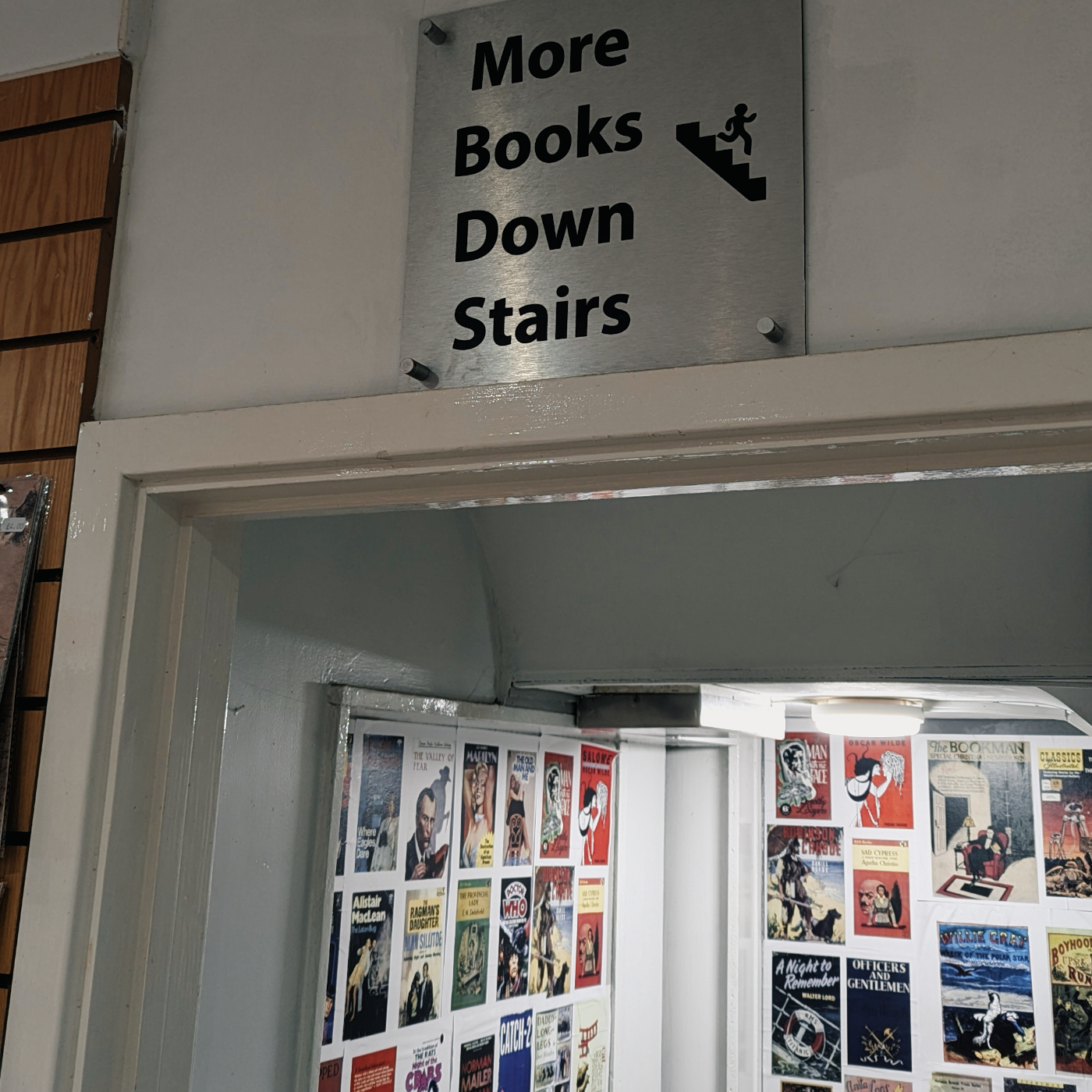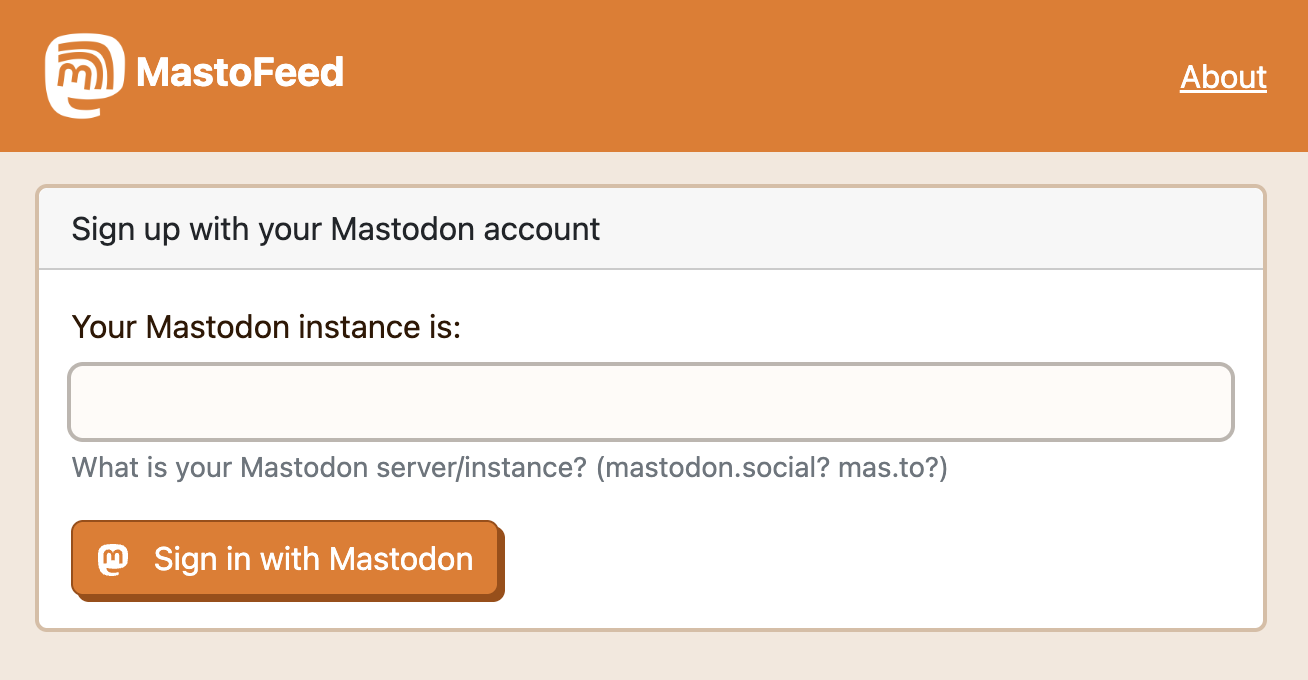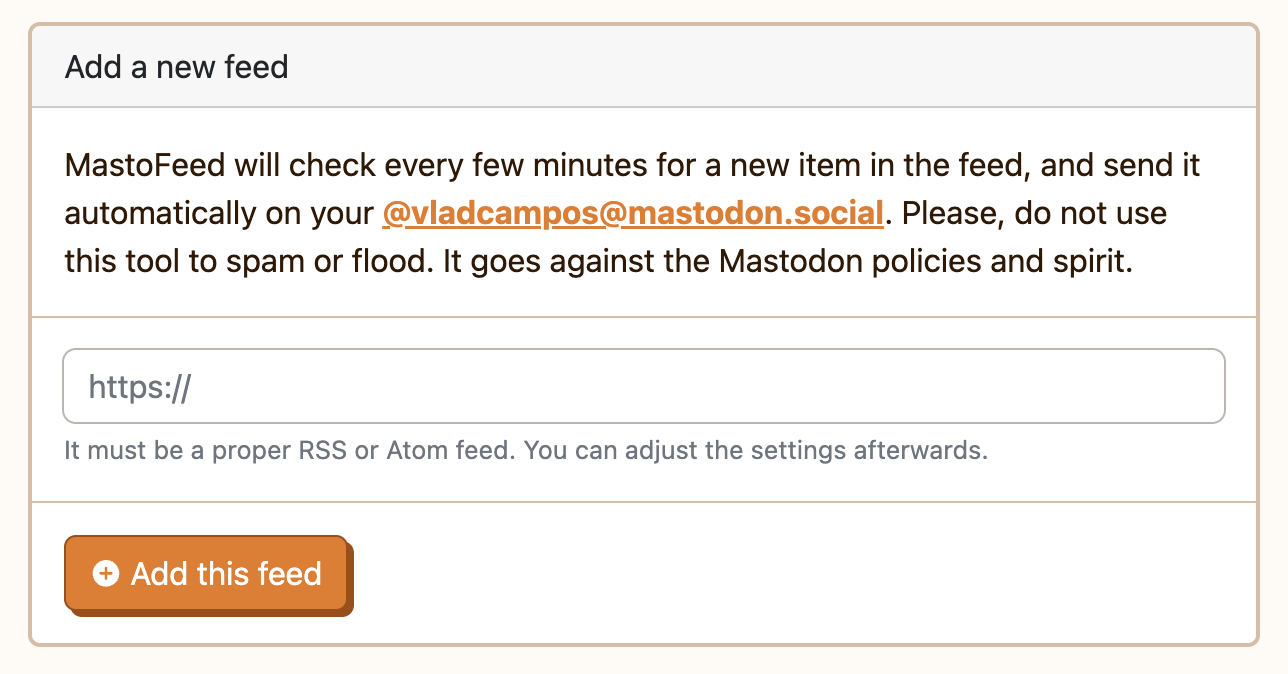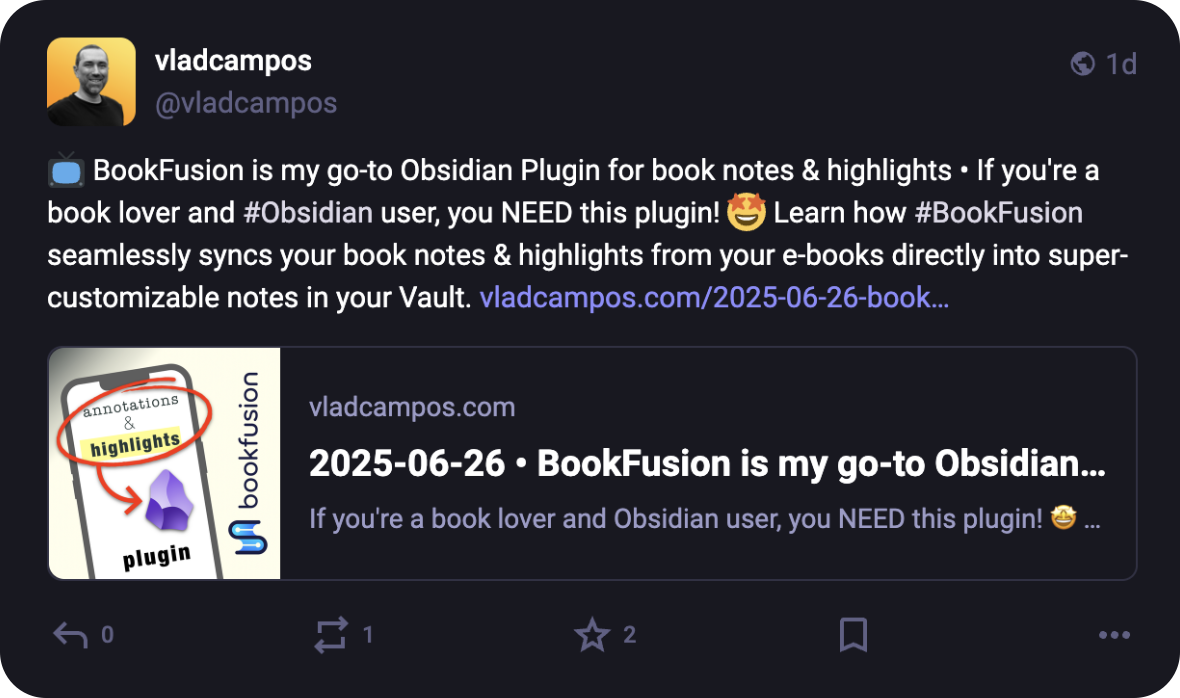Mastodon
🤎 Every morning, I’m inundated by an immense sense of joy as I open Mastodon and enjoy a cup of coffee while looking at the posts tagged with the #coffee hashtag. It is like having a cup of coffee with friends from all over the world.
I would have bought even more books in Oxford.
I remember seeing people reading and studding in pubs in the movies, but I always doubted it was a real thing.
Our first site as first-time visitors to Oxford was Blackwell’s Bookshop. My wife and I are passionate about books, and that was a fascinating experience, but I was not expecting to see myself immediately entering another bookshop in the same street. Keep in mind that it happened minutes after spending almost the entire morning trying to control myself not to buy all the incredible books in that maze of shelves.

The first book I bought that day was ‘The Rule of Law: A Very Short Introduction’, but I would have purchased many others if I weren’t restricted by the size of the cabin baggage I was allowed to bring onboard the plane on my trip back to Porto.
And the bookstores were not the only ones tempting me. During one of our random walks, we came across a secondhand shop selling all sorts of intriguing old items and, of course, books.
It has to be small—I told myself.
‘The observer’s book of manned spaceflight’ from 1975 is indeed very compact, but there’s so much detail in it. It made me think a lot about how hard it was to write a book like this in the past. For starters, think about all the fact-checking.
In hindsight, choosing this book might have not been only a question of size. There must have been a big role played by my subconscious as well. The store had all these signs inviting people to follow them on Twitter, and I couldn’t resist and had to talk to them about decentralized social media, in particular Bluesky and Mastodon, when paying for the book.
The current state of that other social network and that person, whom I’d rather not mention the name, are making me even stop watching some great creators covering SpaceX. Yes, I’m probably not mature enough to separate things. Or, maybe, I’m just a simple human being with a strong sense of ethics. Anyway, back to the city and its countless bookshops.

This time it was a store practically bagging us to go inside. There were so many books outside, just like fruits and vegetables found in boxes on the sidewalk in small European grocery stores. And there it was for less than £3. ‘Do Androids Dream of Electric Sheep’ has been on my TBR list for a long time, and I had to get it.
How many bookstores are there in this city?
Then there’s all these people studying everywhere. And they are not pretending; one can clearly see they are really trying to master something complicated. The funniest day, however, was when we went to this restaurant for lunch, and there it was, the funniest sigh ever.

In the same place, a girl at the table behind ours literally told her friend that she was staying for just one more hour, and then she would go to a pub and study there. I remember seeing people reading and studying in pubs in movies set in Oxford, but I honestly did not believe that was a real thing. Not only is it true, but it’s extremely prevalent and widespread.
However, books were not the only items I had a hard time packing. As you know, I still use an old iPod, and a few years ago I started a trend. Buying random used CDs at secondhand shops when traveling to different countries. Then, at home, ripping them and adding the songs to my iPod. Of course, I had to grab a couple on this trip as well. So far, only good surprises.
I had to turn down so many interesting titles like ‘Why We Remember: Unlocking Memory’s Power to Hold on to What Matters’ just because I didn’t have enough space. Yes, I’ll probably end up buying them online, but it’s not the same thing.
If you enjoy reading, you know what I’m talking about, and you should probably organize a trip to Oxford with time to spare in coffee shops and pubs. To read, of course. But remember to leave space in your bag for all the incredible books you’ll be almost forced to buy.
The case for By Me a Coffee joining the Fediverse.
If you take a look at my Buy Me a Coffee page, you’ll notice that it is basically a timeline, just like many other social media sites. In my case, perhaps because I talk a lot about it, many of the supporters are Fediverse users. Regardless of the reason, they don’t have access to certain features available to other social media users. Although this is an issue that can be easily fixed with some tweaks to the site, why stop there?
11 Million Possible Supporters
Imagine for a second that Buy Me a Coffee has adopted the ActivityPub protocol and now provides you, as a creator, with a Fediverse feed and address. Probably something like @vladcampos@buymeacoffee.com or @vladcampos@buymeacoffee.social. Or even @vladcampos@bmac.social, to shorten it like Medium did.
In any case, anyone using an ActivityPub-compatible service, like Mastodon, Flipboard, and so many others, would be able to follow your username and see and reply to all your posts from the ActivityPub service they are already using.
It means that creators who are not part of the Fediverse because they believe it is too complicated or who are not familiar with it would be exposed to 11 million users immediately. Since everything is connected, millions of users would not need a Buy Me a Coffee account to follow and engage with the posts of the creators they love.
And there’s no need to change how non-Fediverse users have access to the current Buy Me a Coffee site. For example, my blog is compatible with ActivityPub, but anyone on the open web can read the posts just like they would on any other blog.
As for the creators who are familiar with the Fediverse, they could, for example, use tools to cross-post to their Buy Me a Coffee feed. Another option would be to start using Buy Me a Coffee as their main way to interact with the rest of the Fediverse. That by itself would indirectly promote Buy Me a Coffee to other people on the Fediverse, as everyone would be seeing the company’s URL.
For some creators, this would be their first experience on the Fediverse. Others would probably move their followers to Buy Me a Coffee. In any case, being able to bring your followers with you anywhere is what makes people on the Fediverse move around and try different services. Currently, I’m a Mastodon user, but, I have already moved a couple of times and my followers always came with me.
Restricted to Creators
But instead of letting all users create ActivityPub accounts, I think Buy Me a Coffee should limit them to creators. Running an ActivityPub server is not cheap, and it comes with all sorts of moderation problems, which have caused many companies to give up. Not to mention that there’s no need to open the account creation to supporters since they can use their current Fediverse accounts to follow the creators.
First Steps
This is not a simple project, but it would certainly help Buy Me a Coffee stand out while also helping creators.
However, there are several small changes that can be accomplished with less effort. For example, show the Mastodon icon when the user sets an account on the social links. Another good practice would be to add Mastodon as an option to the “share on social media” feature. But why not create a Buy Me a Coffee Mastodon account or server to start sharing content and interacting with users there? This was the strategy adopted by Medium and Flipboard to get a sense of how things work differently on the Fediverse.
And of course, as I have already mentioned to Jijo Sunny in a recent conversation, many of the above suggestions also apply to Voicenotes.
Anyway, as I said before, I’m biased, but Mastodon is the only social media app I keep on my phone, as there are no ads or algorithms trying to make me addicted to it. I tap the app’s icon and look at my chronologically ordered feed to see and enjoy what people I choose to follow are sharing. In other words, this is the perfect environment to follow and interact with creators I support.
Heads up! Starting with this post, I’m going to add a little mess to my online presence for a while. I’m trying out Microblog’s cross-posting feature to see if it works for me. The original posts added to vladcampos.com will be automatically shared on Bluesky, LinkedIn, and Mastodon.
Future-proofing my online presence
My thoughts and opinions on ActivityPub and the Fediverse are numerous, and I am already working on an article to share them with you. For this one, the plan is to explain my strategy to future-proof my online presence.
If you don’t know what ActivityPub and the Fediverse are, please watch my recent video about this topic. But the most important information to understand is that one can follow and be followed, as well as engage, regardless of what social platform is being used.
Many services have been compatible with the ActivityPub protocol for a long time now, but I don’t think we can deny the fact that if large corporations adopt it, the chances of it becoming mainstream are higher. And based on the recent announcement by Flipboard and the tests being conducted by Threads, I’m pretty sure this is what’s happening right now.
Again, I suggest watching my recent video on the topic to understand the details and implications. For now, let us discuss the reasons behind my choice of Micro.blog and Mastodon.
Micro.blog
I believe that Micro.blog is a link between the old Internet, before social media, where people used to write on websites and blogs, and the new Internet that is all about sharing everything.
At Micro.blog, you can make a website with static pages and and also have a blog. The cool thing about the blog is that it uses the ActivityPub protocol. This means that anyone using any ActivityPub service can read and engage with your posts.
But there’s more, or, should I say, less? If you read Manton Reece’s book about starting a Micro.blog, or follow him online, you’ll see that he is really into writing short posts. It is also evident in the company’s name and the blog feature on Micro.blog.
If one writes simple posts, such as tweets, they will be added to the timeline, like what happens on Twitter and other similar services. On the other hand, if a long-form text is created, that will become a blog post like this article you are reading. However, it will also be added to the timeline with a link to the article. And, once again, that timeline is compatible with ActivityPub.
All these means that someone, say, on Mastodon, can follow and engage with all the posts without ever being a Micro.blog user. You can use my blog to try it out. Just look for @vladcampos@vladcampos.com on your preferred Fediverse platform.
There are already many great interviews with Manton Reece about Micro.blog out there, but I’m thrilled to share that he recently accepted an invitation to have a conversation about all this on my YouTube Channel.
But if Micro.blog is both services in one, why would I need Mastodon? Well, a year ago, I tried using it alone, but I had no success. I left because of a design decision. There are no likes or re-posts on the Micro.blog timeline. To explain why I care about it, let’s talk about Mastodon.
Mastodon
When I first heard about Micro.blog, I was already a Mastodon user, where I was building a new community after leaving Twitter. On doing so, I quickly learned how important likes and re-posts are. Because of them, I got to know so many nice people re-posted by someone I was following. The same thing happened the other way around. People re-posting me on Mastodon helped me get noticed by others.
Nevertheless, I fully understand Micro.blogs decision. The goal is to stimulate conversations, but, to be honest, I felt very isolated there. And at that particular moment, I did not have a significant number of people following me on Mastodon, and I still do not. Until these days, I keep discovering interesting people and communities through re-posts.
How is this future-proofing my online presence?
First of all, ActivityPub is a W3C protocol. Then, there’s the fact that major corporations are beginning to embrace it. But the most important reason is that ActivityPub-compatible social media allows you to move between different services and bring all of your followers with you. Let’s say that in the future, Micro.blog adds likes and re-posts and I decide I want to leave Mastodon. I’ll be able to easily do it, bringing with me all the followers, whom, by the way, I prefer to call community.
This is such a win-win situation. Whenever and wherever it pleases me, I am free to move, and I don’t have to ask anyone from my community to move to a different social media platform. Furthermore, if they also wish to move somewhere else, that’s fine. As long as it is compatible with the ActivityPub protocol, neither technology nor CEOs will prevent us from keeping in touch with each other.
The Plan
My website has already been migrated to Micro.blog, but I will continue to post on Medium, which is, incidentally, also in the process of adopting the ActivityPub protocol.
In December 2024 I started the processo of moving my site to Obsidian Publish. In August 2025 I moved back to Micro.blog
Regarding micro-posting, I’ll be doing it on Mastodon. So, if one wishes to follow only my articles or only my micro-posts, they can do so. Or, they can also follow both. And the best part is that anyone can follow and interact with me using any ActivityPub-compatible service. This is absolutely remarkable!


